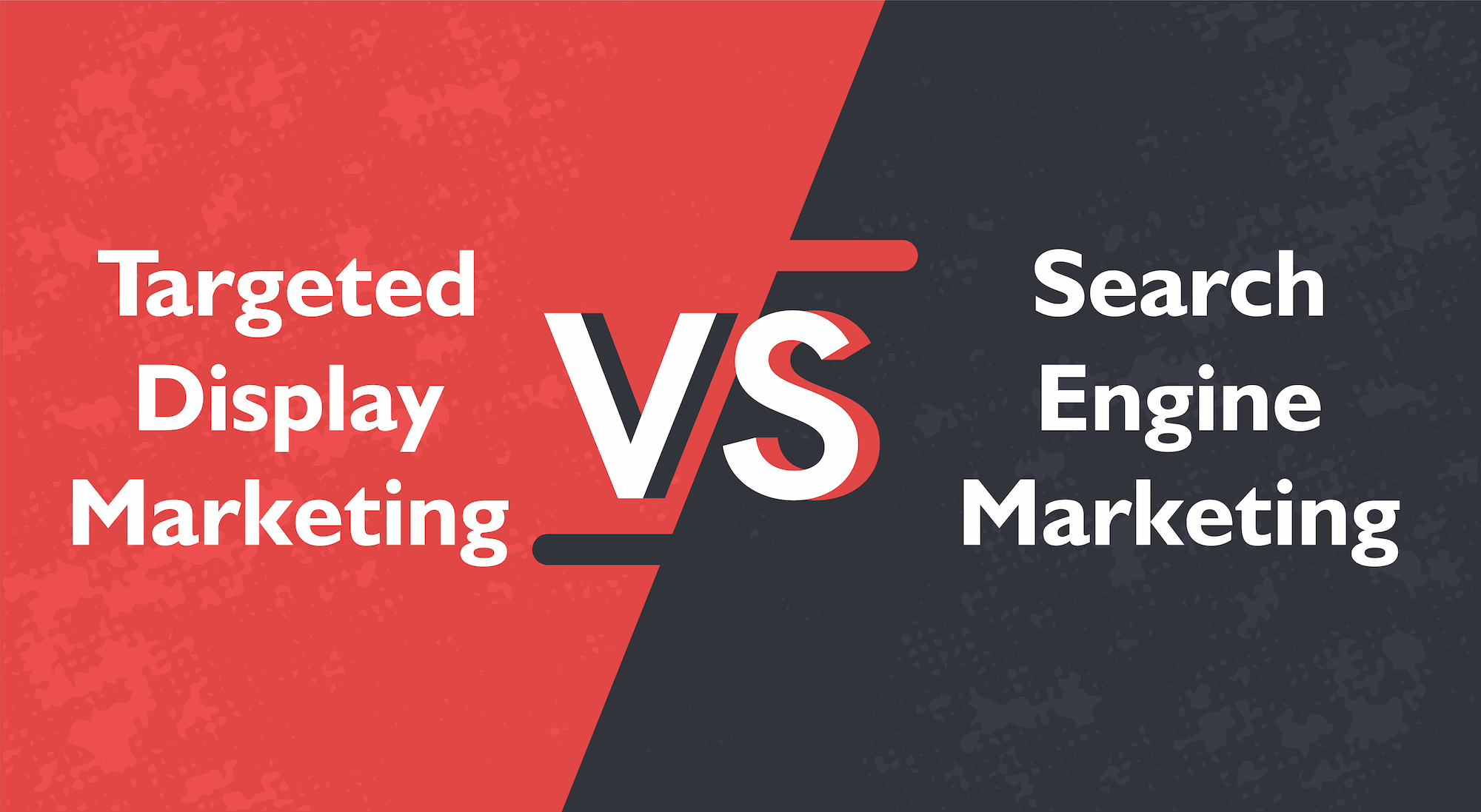Before we compare the two, let’s briefly define what each means:
SEM is a combination of strategies used to improve how your website ranks on major search engines. Usually a combination of Pay Per Click (PPC) and Search Engine Optimization (SEO). PPC is where you bid on keywords to rank highly on the search engines results page, and SEO is using strategies to rank high in the organic (free) section of the search engine results.
Targeted Display are the ads that follow you around when you’re searching the web. How does it work? With multiple different tactics. Most campaigns are made with a blend of tactics including:
-
Geofencing: Using GPS data to target users in a physical location
-
Site Retargeting: Marketing to those who have visited a business’s website
-
Keyword Search & Contextual Retargeting: Marketing to those who are searching for and reading content about products and services.
-
Category Contextual Retargeting: Marketing on websites where prospects are likely to be
-
CRM/Email Targeting: Using data to target user devices with CRM and Email lists
Now let’s compare the two by evaluating opportunity, audience and reports!
Opportunity
SEM: Most people spend less than 10 seconds on a search results page. Do the math, let’s say someone does 10 searches a day, multiplied by 10 seconds each = 100 seconds (less than 2 minutes a day!) That is a very short amount of time to make an impression on a consumer.
Target Display: The average adult spends over 5 hours a day online surfing the web. That is so much opportunity to target a consumer! They can be targeted with the same banner ad multiple times as they read the news, browse through Facebook, read movie reviews, etc.
Ultimately you get MORE opportunity to get in front of your audience with target display, but it works better when COMBINED with SEM. Because once the display ad has made an impression on the user and they’re now ready to search for a brand name or specific keyword, you want to be the first ad that shows up in google when they search!
Audience
When it comes to the purchase funnel, SEM only has value at the beginning and end. In the beginning, when they become aware they need a product or service, they will use Google to search high-level keywords like “best mattresses” or “mattress reviews”. After the consumer has considered all their options and has probably read some reviews on different products, they are now ready to make an informed decision. Now they go back to Google and search a specific product keyword like “casper hybrid mattress”. Now they are more likely to click on a branded ad for that product.
A consumer might be aware they need a new mattress but they don’t know exactly what brand/type they want. This is where Targeted Display comes in, to target those customers who may not know your product exists. Targeted Display has value at every level of the purchase funnel. Using data, a mattress company can target consumers with branded display ads anywhere they go on the web, staying top of mind up until they are ready to buy.
Reports
When it comes to reporting SEM and target display are different. Looking at SEM, the Click-Through Rate (CTR) is a reliable metric that helps prove the campaign is working. You know your google ad campaign is successful when people are clicking on your ads, and it is the goal of the campaign. When it comes to Targeted Display, banner ads and video ads are very visual, but only about 8% of users will actually click on a banner ad. The goal is not necessarily to receive a click, but to increase targeted brand awareness. So how else can we track the impact? The answer, View-Throughs. With view-throughs, which can track how many people have seen an ad, and within a defined amount of time, come to the website organically. This can also be measured by tracking organic site traffic increases prior to a display campaign, and during the campaign. Depending on your campaign type, goal, and product type some metrics may be more important than others. To cover all areas of the sales funnel, SEM and Targeted Display compliment typically boost each others results.


